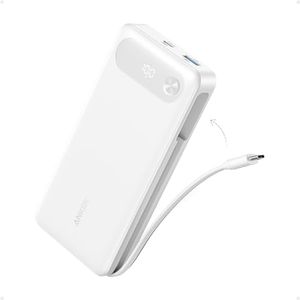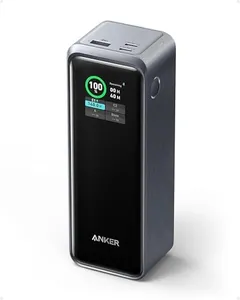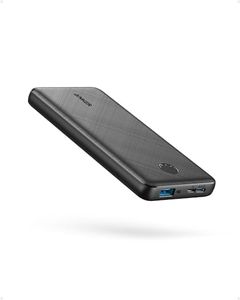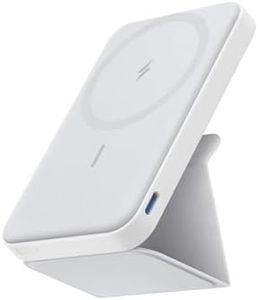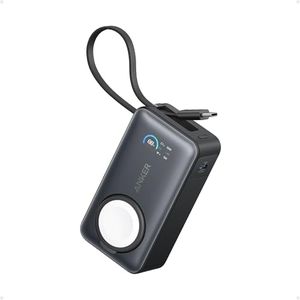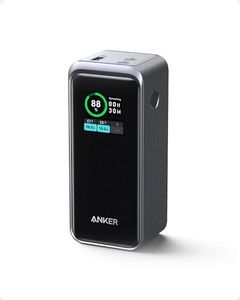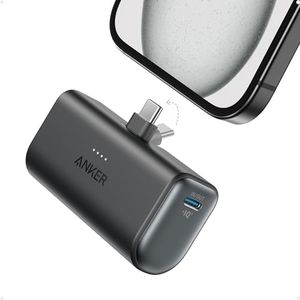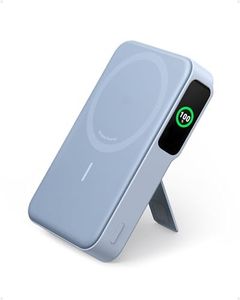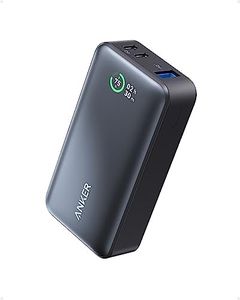We Use CookiesWe use cookies to enhance the security, performance,
functionality and for analytical and promotional activities. By continuing to browse this site you
are agreeing to our privacy policy
10 Best Anker Power Banks
From leading brands and best sellers available on the web.Buying Guide for the Best Anker Power Banks
Selecting the right power bank can make your daily charging needs much more convenient and stress-free. Whether you're traveling, commuting, or simply want a backup for your devices, it's important to consider how and where you plan to use it. Understanding key features will help you pick a power bank that's a great match for your devices and your lifestyle.Capacity (mAh)Capacity is measured in milliamp-hours (mAh) and shows how much charge the power bank can hold. The higher the mAh, the more times you can recharge your phone or other devices. Small capacities (around 5,000mAh) are usually enough for one full smartphone charge and are great for everyday use or short outings. Medium capacities (10,000mAh to 15,000mAh) can charge a phone a couple times and are suitable for busier days or short trips. Large capacities (20,000mAh or more) can handle several phone charges or charging tablets and even laptops; they're best for travel or heavy use. Choose based on how many devices you need to charge and how long you’ll be away from a wall outlet.
Power Output (Wattage/Amperage)Power output refers to how fast a power bank can charge your devices, often listed in watts (W) or amps (A). Lower output (up to 10W) is standard for basic phones or older devices. Medium output (10W to 18W) supports faster charging for most modern smartphones. High output (above 18W, sometimes up to 60W or more) can power tablets, laptops, and fast-charging smartphones. Consider the needs of your main devices: pick a power bank with higher output if you want speedy charging or if you plan to charge more powerful gadgets.
Number and Type of Output PortsThe number and type of output ports determine how many devices you can charge at once and whether the power bank supports your device’s charging cable. Ports come as USB-A (larger, traditional), USB-C (smaller, newer, supports faster speeds), and sometimes micro-USB. If you often charge more than one device at a time, look for two or more ports. If you have modern devices, check for USB-C ports for convenience and speed.
Size and WeightThe physical size and weight of a power bank affect how comfortable it is to carry with you. Slim, lightweight models are pocket-friendly but usually have smaller capacities. Larger, heavier models offer more charging power but are better suited for carrying in a bag or leaving in your car. Consider how portable you need it to be—pick a compact model for daily carry or a larger one for travel or emergencies.
Recharging TimeRecharging time tells you how long it takes for the power bank itself to fill back up once it's empty. Faster input (often supported by USB-C or special fast charging features) can refill a power bank in a few hours, while older models with standard input may take much longer. If you need your power bank ready to go quickly, opt for a model with fast input charging.
Safety FeaturesSafety features protect both your devices and the power bank from problems like overheating, overcharging, or short circuiting. Look for terms like 'overcharge protection,' 'temperature control,' or 'short-circuit protection' in the product description. These features are especially important if you plan to use the power bank unattended or with more sensitive devices.
